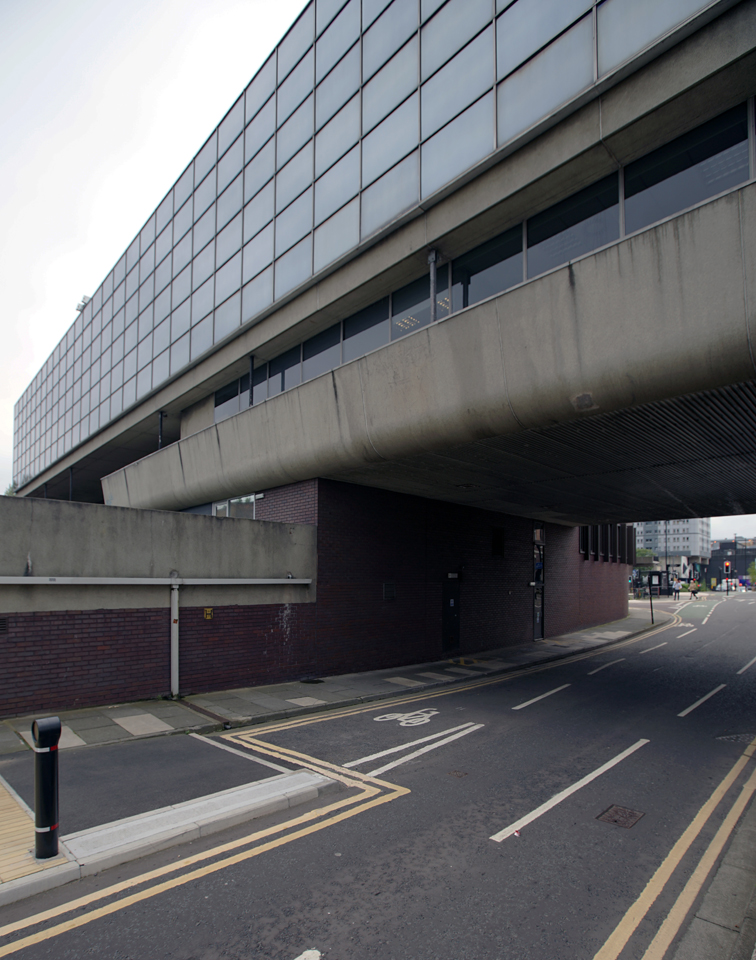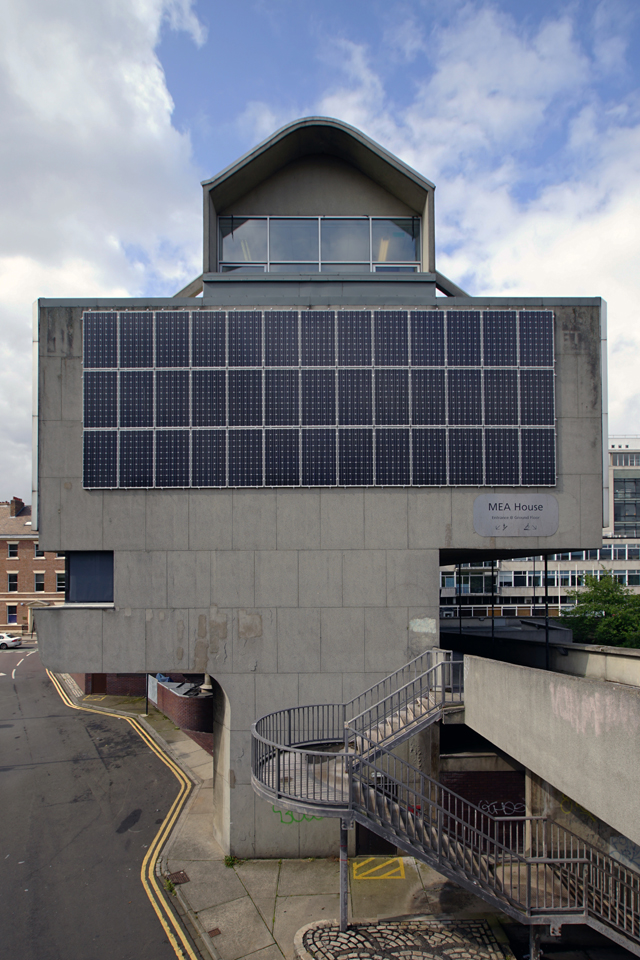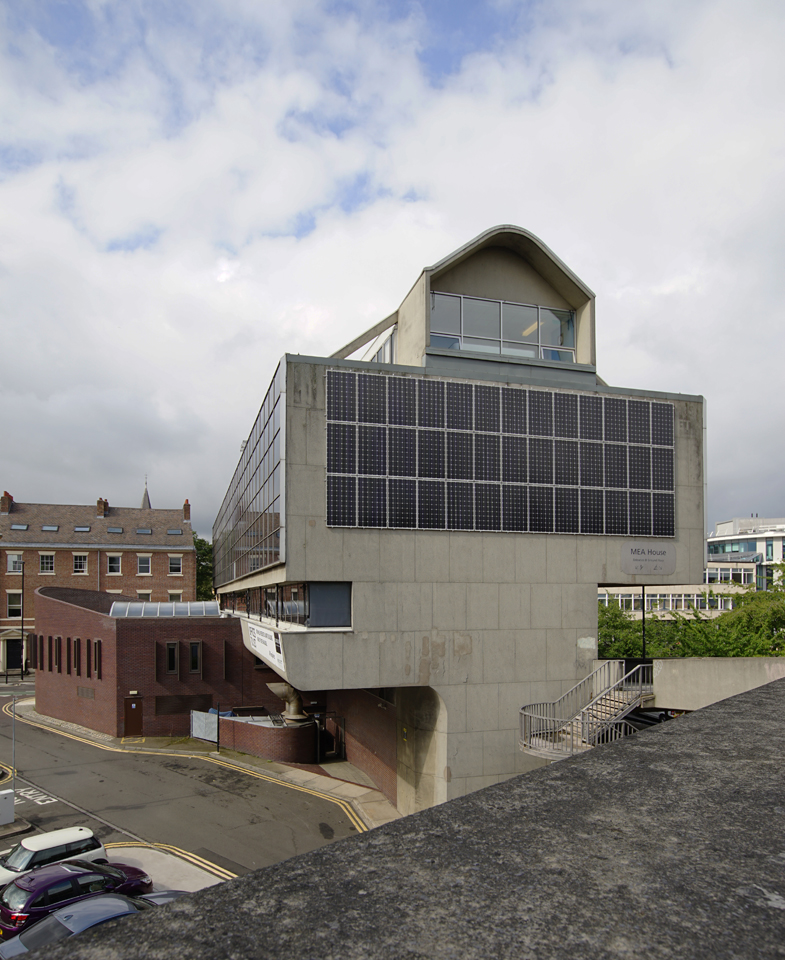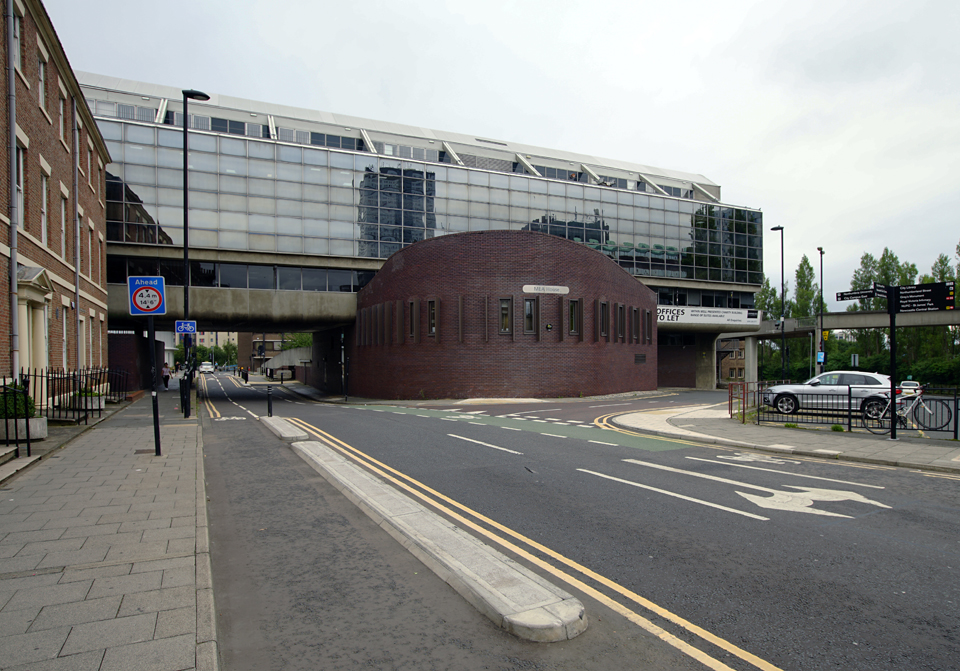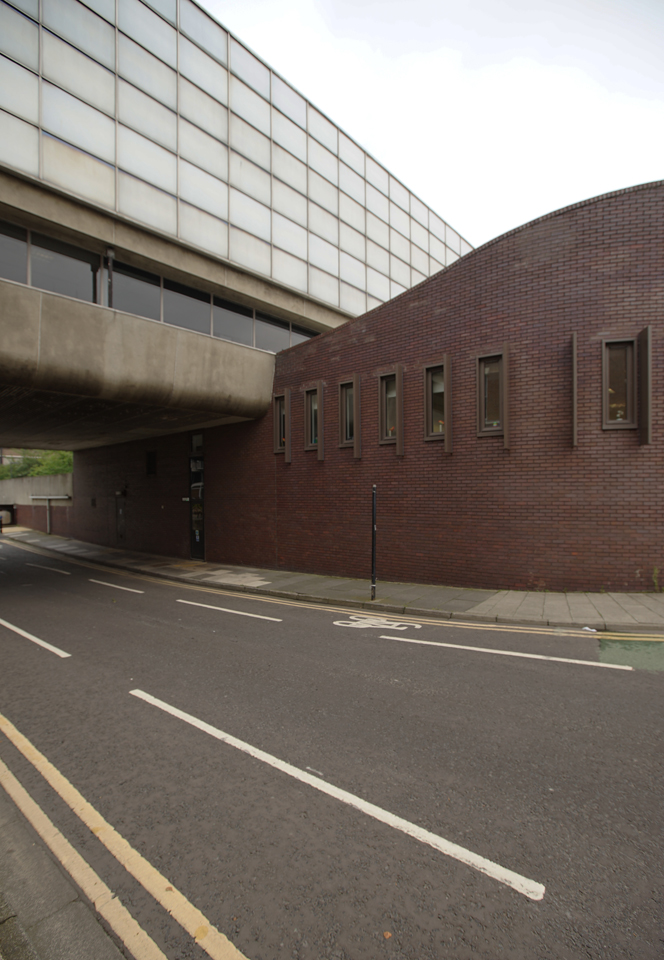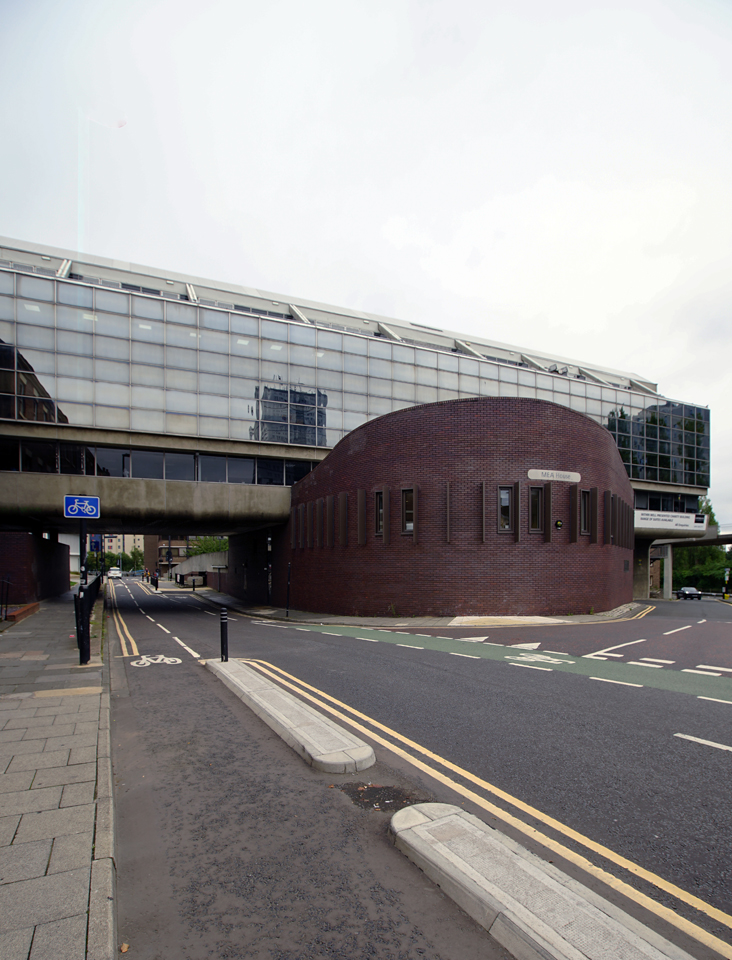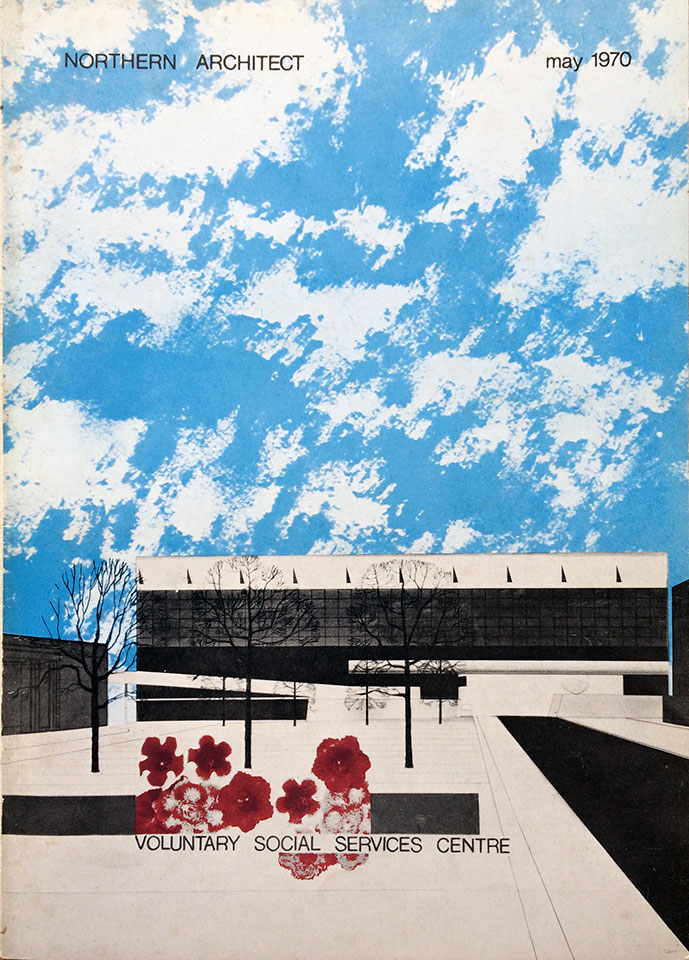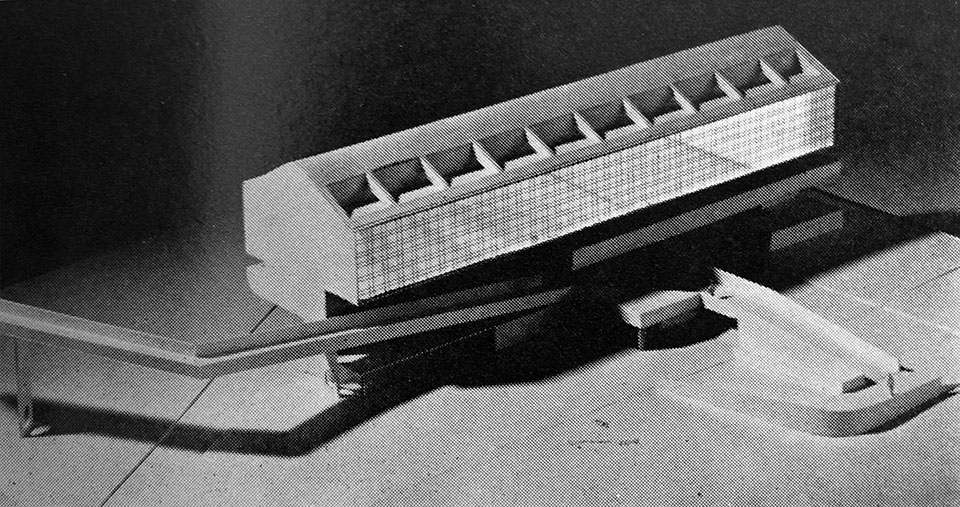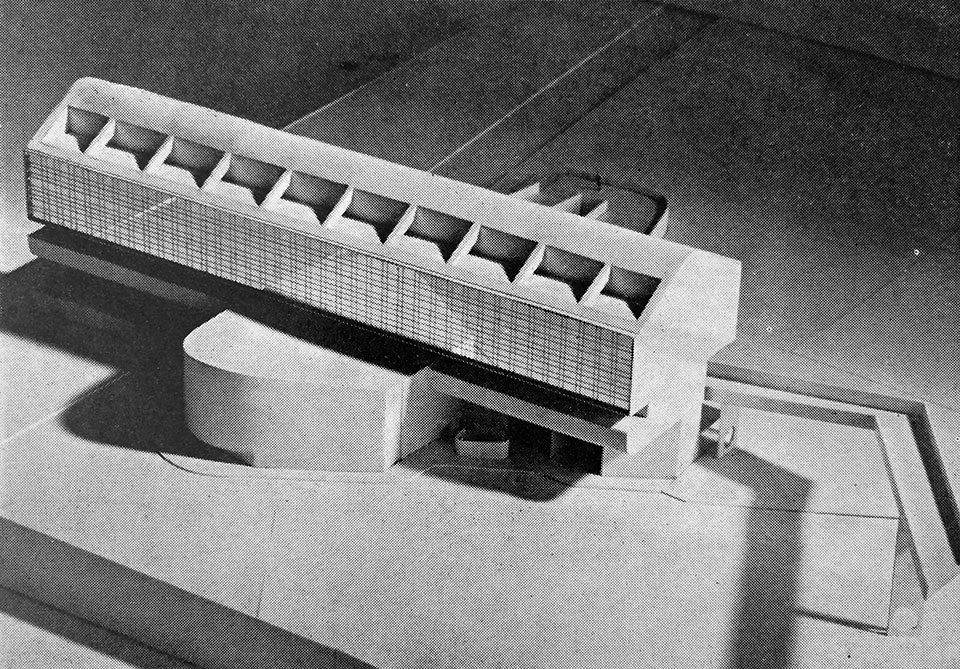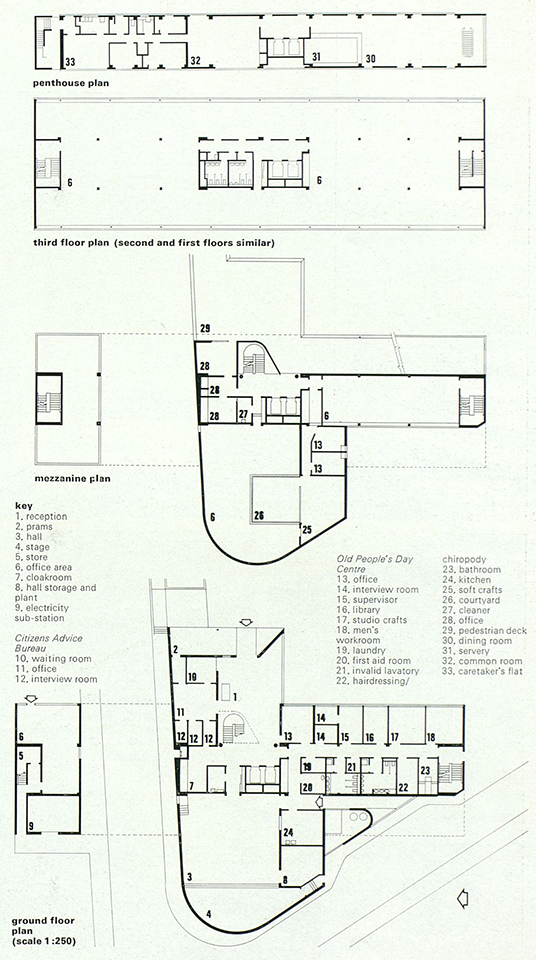MEA House
1974
Won in competition, this building for the MEA Trust was designed to house a number of charitable organisations that were previously dispersed across Newcastle, usually in substandard accommodation. The assessors remarked that the site was only just capable of containing the volume implied by the programme in the brief. Ryder and Yates’ solution was seen as ‘elegant’ and ‘effortless’ in reconciling this apparent mismatch [1]. The context and constraints clearly led to the building as it came to be – the site was surrounded by a diverse set of existing buildings with mismatched styles and was to be severed by a planned inner urban motorway which would require the integration of a pedestrian footbridge into the scheme. In order to fit all the functions in the building required optimisation of the available volumes, but could be no higher than the adjacent Rutherford College of Technology. This led to a horizontal slab block that bridged across an existing road, itself demanding an innovative structural solution that was the ‘backbone’ of the idea – three structural cores held a series of yokes, suspending three floors of office accommodation. The distinctive outline of the gable elevation was that of the structural cores and intended to reveal the hidden engineering to the outside. In floating the main block, a hierarchy was established between the slab and its podium and the maximised volume of the slab allowed for a more plastic, sculptural approach to the podium. The podium contained an old people’s day centre and a shared function hall and was finished in a smooth-faced brown brindle brick. In an attempt to obviate the need for the elevations to make any attempt to reconcile the disparate styles of surrounding buildings, the architects specified mirrored Pittsburgh glass in aluminium frames, its soft quality distorting the reflected image. In a letter to the AR, Allan Reid, Deputy City Planning Officer for Newcastle complimented the building for the way that it created a ‘pleasant pedestrian square’ from the former car park of Ellison Place and the contribution it made to the holistic planning of the city centre [2]. The project architect was D.G. Lonsdale.
[1] Architect’s Journal, 18 March 1970, p.668.
[2] Architectural Review, February 1976, p.66.
